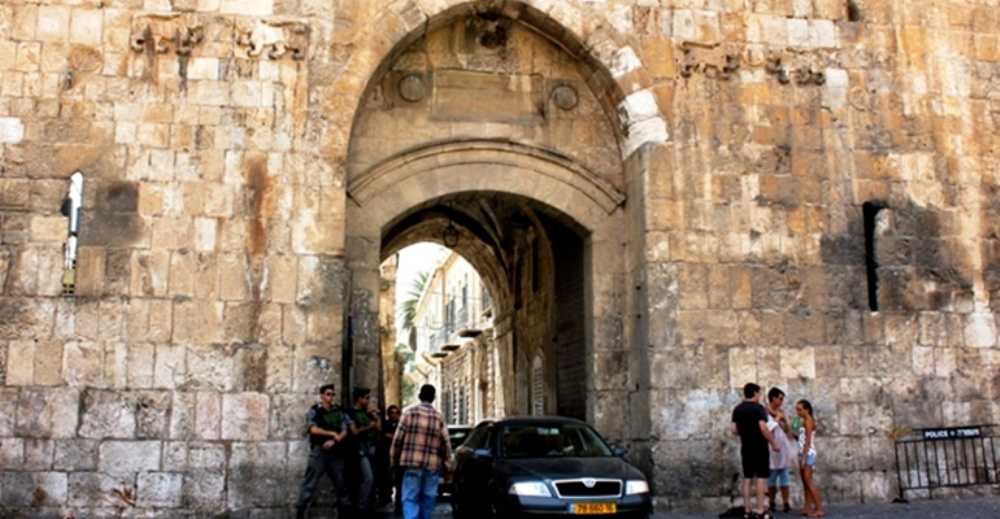The Lion’s Gate is located near Mount of Olives and the Via Dolorosa. This is one of the seven gates that were created in the wall of the old city, and the only one that is open towards the east. The gate was built as part of the wall of the old city during the 16th century by the Ottoman Sultan Suleiman the Magnificent. On both sides of the gate there are lion embossments. According to the legend, they were integrated into this structure following the dream of Sultan Suleiman, in which two lions were about to devour him, as a punishment for the situation of the holy city of Jerusalem, which was not protected at the time.
The sultan interpreted the dream as a sign from above, and ordered to surround the city with a wall. In fact, the embossments resemble cheetahs more than lions. Some say that they were taken from a more ancient building of the Mameluke ruler Baibars, whose symbol was a Cheetah.
Above the lion embossments there are additional decorations: flowers and arches are embossed between the embrasures, and above them an inscription that commemorates the construction of the city’s wall by Suleiman the Magnificent. On the upper part of the gate a terrace stands out, known as a “Mashikoli”. From this small terrace one can observe the outline of the wall, and possibly spill hot oil on intruders and unwanted guests. In the past it was a turn- gate, like Jaffa gate and others, which was meant to delay forces attempting to intrude into the city, but over the years it became a straight gate that enables the entrance of vehicles.
The gate has different names. In Arabic it is named “Bab Sitna Mariam”, due to the Christian site nearby, which indicates the location of the burial of Miriam, mother of Jesus, before she ascended to the sky. The Christians named the gate “Stephen’s Gate” after the first Martyr, the first tortured saint who died for his faith in Jesus. According to one of the traditions, Stephen was stoned next to this gate.
On Sunday of the first week prior to Easter, the Christians walk the path of Jesus, starting from the Mount of Olives. This is the “Palm Sunday”, in which processions of the faithful march from Mount Olives and continue via the Lion’s Gate to the old city.
In June 1967 the IDF paratroopers entered the city via this gate on their way to the Temple Mount, and after 19 years during which the old city was in the hands of the Jordanians, the Jewish settlement there was renewed. At the foot of the wall lies a Muslim cemetery, which was constructed in this place, adjacent to the Temple Mount that is sacred in the Muslim tradition, due to the Muslim belief in the Day of Judgement and the resurrection, that is to take place here.









